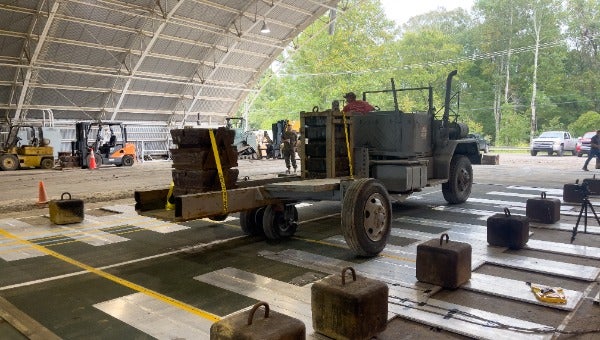ERDC Geotechnical and Structures Laboratory developing new airfield matting system
Published 2:39 pm Thursday, October 21, 2021
Since the 1940s, the U.S. Army Engineer Research and Development Center (ERDC) has evaluated expeditionary airfield matting systems that allow military units to quickly build runways, hangar floors and parking pads for aircraft in areas where conditions or time do not allow for traditional concrete or asphalt pavement structures. Today, the ERDC is leading a new developmental effort to design a lightweight airfield matting system that can be used to support aircraft for many missions where the AM2 is overdesigned and difficult to deploy.
Air support is critical to most U.S. missions around the globe, whether they are military or humanitarian in nature. However, many parts of the world have conditions that are unsuitable, or the mission is too time-sensitive to allow for the construction of a traditional airfield.
The first use of expeditionary airfield matting construction can be traced back to the U.S. Army Air Corps — now the U.S. Air Force — in the early 1940s in support of World War II. In the 1960s, the U.S. Marine Corps ramped up its use of matting systems and remains the current primary user. The Army, Navy and Air Force also continue to routinely employ expeditionary airfield matting systems.
The AM2 matting system developed by the U.S. Navy in the late 1960s consists of individual panels that weigh close to 150 pounds and are 12 feet in length. The panel dimensions make transportation difficult and assembly time-consuming and cumbersome.
“We are testing a new prototype airfield matting system designed to be more logistically friendly,” said Dr. Tim Rushing, senior research engineer in ERDC’s Engineering Systems and Materials Division Research Group of the Geotechnical and Structures Laboratory. “The new system is designed to be more friendly to air and sea transport and be much lighter than the current matting system.”
The new system will be easier to transport and assemble. The prototype, which began testing earlier this month, features panels that are shorter, lighter and thinner with the new panels measuring only about seven feet in length, weighing about 48 pounds compared to the previous 150 pounds and measuring only 1 inch thick compared to the previous 1 ½ inch thick.
“We are trying to solve a logistics problem,” said Marine Corps Chief Warrant Officer 5 Chad McCammon, Military Deputy Integrated Product Team lead. “Some of the places we’re going to fight the next battle are going to be harder to get to from a logistics standpoint with surface connectors.”
The research program is a partnership between ERDC and the Mechanical Engineering Department at the University of Alabama. The school, in turn, is partnering with Alfab, Inc., of Enterprise, Alabama, to manufacture the panels. Alfab has been manufacturing the current AM2 matting system since the 1970s.
“What’s great is that at the university, one of our biggest deliverables is our students,” said Dr. Paul Allison, director of the Manufacturing at the Point of Need Center at the University of Alabama. “The really exciting thing is getting to bring the students and getting them involved in a research project that has a lot of value to our military members, as well as humanitarian operations.”
“ERDC is an expert in full-scale test section construction,” Rushing said. “We know how to build controlled test sections and the information we gather helps us have better designs and we can write criteria to predict the performance of aircraft on expeditionary airfield surfaces.”






